Disclosure: This article contains affiliate links. We may earn a commission from purchases at no extra cost to you, which helps our travel content.
The locals call Lesotho 'The Kingdom in the Sky' for good reason. As my horse crested yet another ridge, revealing an endless panorama of undulating green mountains beneath an impossibly blue African sky, I couldn't help but whisper '¡Qué belleza!' under my breath. After years of exploring European castles and Latin American landscapes, nothing quite prepared me for the raw, untamed beauty of Lesotho's highlands or the profound cultural immersion that comes with traversing this mountainous kingdom on horseback, starting from the bustling market town of Teyateyaneng.
Preparing for Lesotho's Highland Challenge
Let me be real with you – this isn't your typical tourist trail. A horseback trek through Lesotho's mountains demands serious preparation, both physical and mental. I spent three months building core strength and improving my riding skills before attempting this adventure. The terrain is challenging, with steep ascents that had me clinging to my Basotho pony's mane and descents that tested my trust in these sure-footed mountain horses.
Equipment-wise, I learned quickly that quality matters. My riding gloves saved my hands from blisters during long days in the saddle, while my merino wool base layers proved essential for the dramatic temperature swings between scorching days and near-freezing mountain nights. One piece of gear I wouldn't leave home without? A solar charger – electricity is scarce in remote villages, but Lesotho's abundant sunshine keeps devices powered.
My guide, Ntate Thabo, a Basotho horseman with weathered hands and endless stories, arranged everything through a local outfitter in Teyateyaneng (or T.Y. as the locals call it). The itinerary was flexible – a necessity when mountain weather and river crossings can change plans in an instant.

💡 Pro Tips
- Book with local outfitters in Teyateyaneng rather than international companies to support the local economy and get more authentic experiences
- Train for at least 2-3 months before your trip with core-strengthening exercises and riding lessons if you're not experienced
- Pack layers! Temperatures in the highlands can range from 80°F (27°C) during the day to near freezing at night, even in spring
Cultural Immersion in Basotho Villages
The rhythm of hoofbeats became the soundtrack to my journey as we traveled between remote mountain villages, where electricity remains a luxury and traditions run as deep as the valleys. Each night brought a new community experience – sometimes sleeping in a traditional rondavel (round stone hut with a thatched roof), other times camping under stars so bright they seemed close enough to touch.
In one village near Thaba-Tseka, I was invited to join a local family for dinner. We sat on reed mats around a central fire pit while the grandmother prepared papa (maize porridge) and moroho (wild spinach) in cast iron pots. Communication happened through a mix of broken English, my guide's translations, and universal gestures. When I showed photos of El Paso and my family's home in Ciudad Juárez on my phone, the children gathered around with wide eyes, creating an unexpected bridge between our vastly different worlds.
Each village has its own specialty craft, and I couldn't resist collecting a few pieces. The most prized addition to my travel collection is a hand-woven mokorotlo hat – the conical straw hat that appears on Lesotho's national flag. Finding one that fits my head perfectly required visits to several villages until an elderly weaver in Ha Lejone created one just for me, measuring my head with weathered hands while humming traditional herding songs.
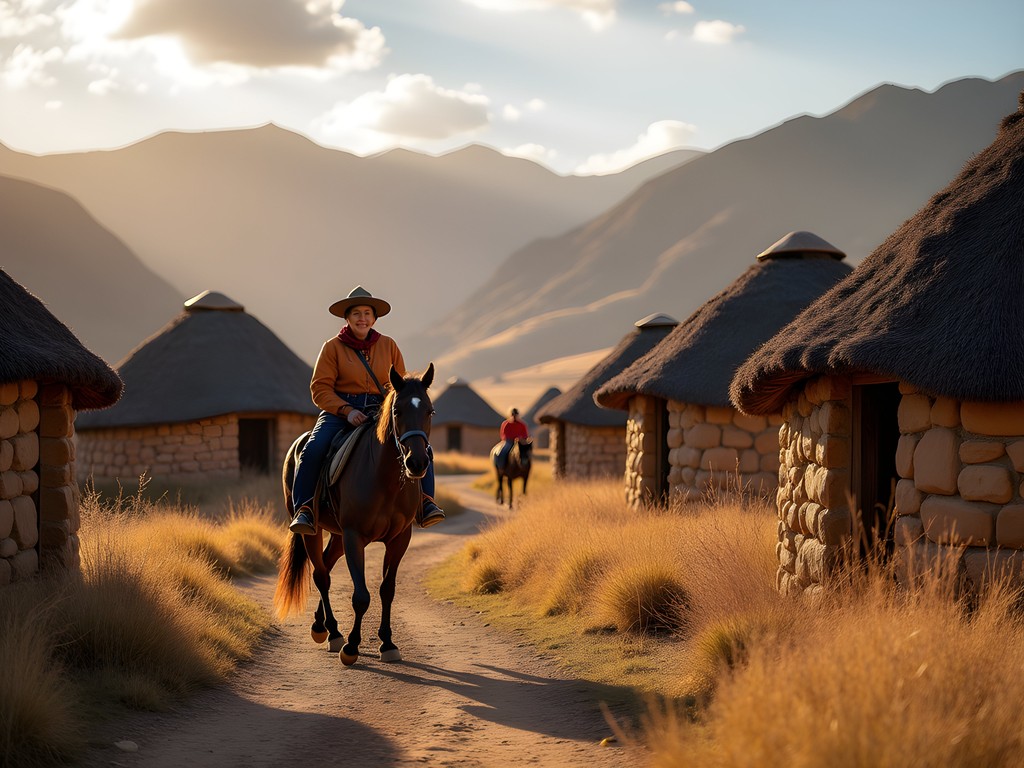
💡 Pro Tips
- Learn a few basic phrases in Sesotho – even simple greetings like 'Lumela' (hello) open doors to warmer connections
- Bring small gifts for host families – school supplies for children or coffee from your home region are appreciated
- Always ask permission before taking photos in villages, and offer to send prints back through your guide
Conquering Lesotho's Mountain Passes
There's something profoundly humbling about traversing 3,000-meter mountain passes on horseback. The Sani Pass and Blue Mountain Pass tested both our endurance and our nerve – narrow trails with sheer drops that had me questioning my life choices while simultaneously feeling more alive than ever.
My Basotho pony, which I nicknamed Valiente for his courage, navigated terrain that would make mountain goats nervous. These horses are legendary for their surefootedness, and for good reason. While I white-knuckled the reins during particularly precarious sections, Valiente calmly picked his path across loose scree and narrow ledges.
One morning, we set out before dawn, headlamps illuminating the path as we ascended toward Thabana Ntlenyana, southern Africa's highest peak. I wore my insulated jacket in layers with my merino base, which proved perfect for the transition from freezing pre-dawn to midday warmth. By the time we reached a viewpoint near the summit, golden light was spilling across the landscape, revealing a tapestry of valleys, rivers, and distant villages that stretched to the horizon.
These passes demand respect and preparation. My hiking gaiters protected against rocks and brush during sections where we had to lead the horses on foot. Each successful crossing brought a sense of accomplishment that no urban adventure could match.
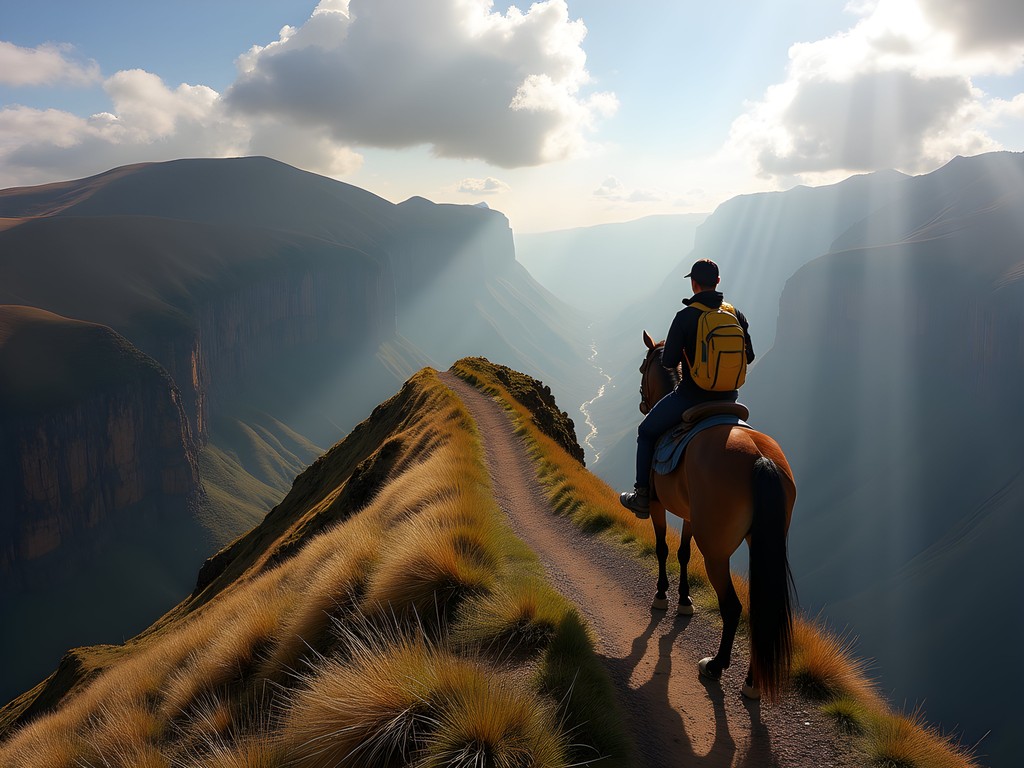
💡 Pro Tips
- Trust your horse and guide when crossing difficult terrain – the Basotho ponies know these mountains better than any human
- Bring a personal water filter for refilling from mountain streams when village water sources aren't available
- Start mountain pass crossings early in the day before afternoon thunderstorms roll in, especially in spring
Finding Rhythm in Highland Life
By the second week, my body had adjusted to the daily routine of 6-8 hours in the saddle. Mornings began with strong mountain tea served in enamel mugs, followed by a breakfast of maize porridge and dried peaches. As an avid coffee lover, I was grateful I'd packed my portable espresso maker and beans from my favorite Omaha roaster – a small luxury that made each sunrise more magical.
The days developed a meditative quality, punctuated by river crossings, impromptu races with local herdboys on their ponies (which they always won), and picnic lunches in valleys carpeted with wildflowers. My quick-dry travel towel became essential for midday dips in mountain streams – freezing but revitalizing.
What surprised me most was how quickly I disconnected from digital life. My phone stayed mostly off, used only for occasional photos. Instead, evenings were spent learning traditional Basotho songs around campfires, practicing my terrible attempts at the lesiba (a traditional string-wind instrument), and listening to my guide's stories of Lesotho's history and legends.
The experience reminded me of childhood summers in rural Mexico with my abuela – the same sense of time slowing down, of connection to land and tradition. Despite being halfway across the world in a culture vastly different from my Mexican-American heritage, I found unexpected parallels in the importance of oral history, respect for elders, and the central role of horses in mountain communities.
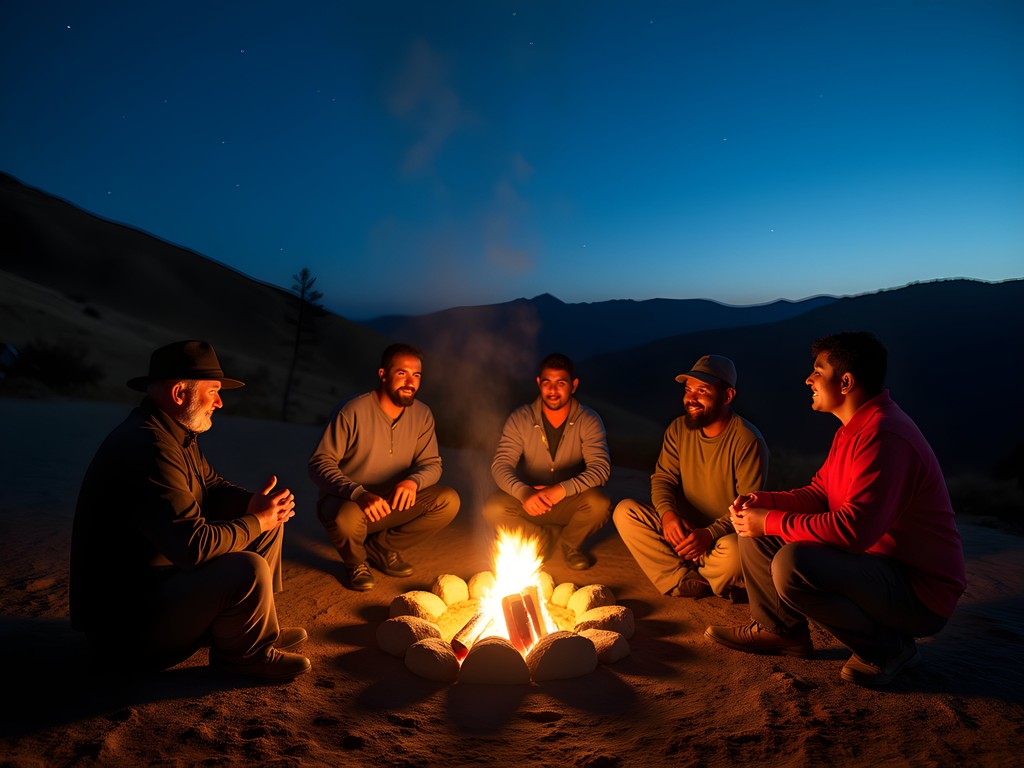
💡 Pro Tips
- Pack a journal – the lack of digital distractions makes this journey perfect for reflection and writing
- Learn traditional songs – music is the universal language and helped me connect with locals despite the language barrier
- Embrace the slower pace and don't try to cover too much distance each day – the journey itself is the destination
Final Thoughts
As we rode back into Teyateyaneng two weeks later, I was a different person than when I'd left – sun-darkened, muscle-sore, and profoundly changed by Lesotho's mountains and people. This wasn't just a trek; it was an immersion into a way of life that has remained largely unchanged for generations, where horses aren't recreational but essential, where community means survival, and where the rhythm of days is still dictated by sun and season rather than screens and schedules.
For those seeking adventure beyond the typical tourist path, Lesotho's highland horseback routes offer something increasingly rare in our hyperconnected world – genuine challenge, cultural authenticity, and landscapes that remain largely untouched by mass tourism. The Kingdom in the Sky demands more from travelers – physical endurance, cultural sensitivity, and adaptability – but rewards those efforts with experiences that can't be captured in Instagram filters or TikTok videos.
As I shared a final cup of tea with Ntate Thabo before heading to the airport, he asked if I'd return. 'Claro que sí,' I answered without hesitation. Some places leave marks on your soul that call you back. Lesotho's highlands, with their stark beauty and the gentle strength of the Basotho people, is undoubtedly one of them.
✨ Key Takeaways
- Horseback trekking in Lesotho offers a rare combination of physical challenge, cultural immersion, and pristine mountain landscapes
- Working with local guides and outfitters in Teyateyaneng provides the most authentic experience and supports the local economy
- Physical preparation is essential – this adventure requires riding experience and good fitness levels
📋 Practical Information
Best Time to Visit
Spring (September-November) or autumn (March-May)
Budget Estimate
$1,500-2,500 for a two-week guided trek including horses, accommodation, food, and guides
Recommended Duration
Minimum 10 days, ideally 2 weeks
Difficulty Level
Advanced - Requires Riding Experience And Good Physical Fitness
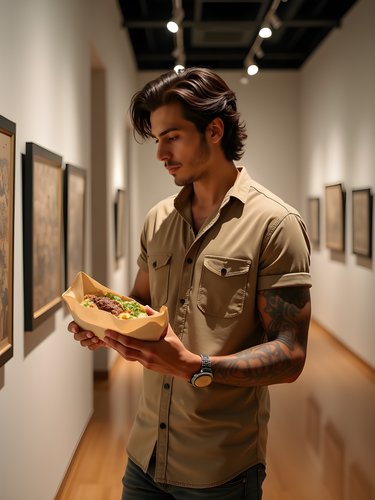
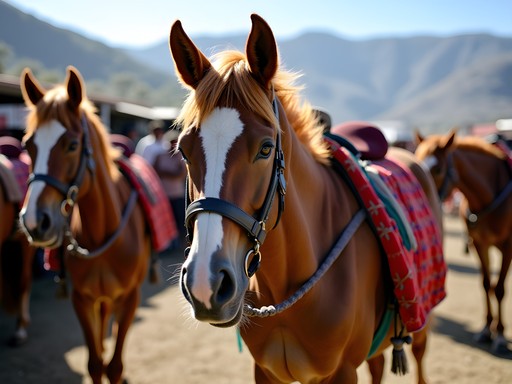
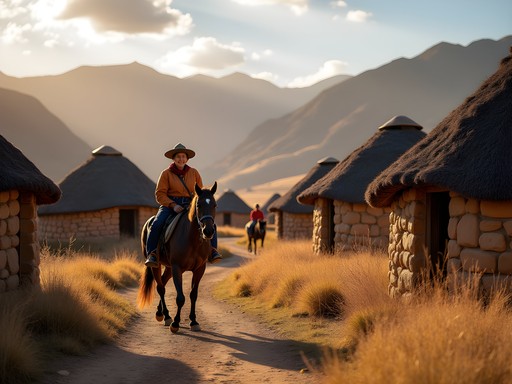

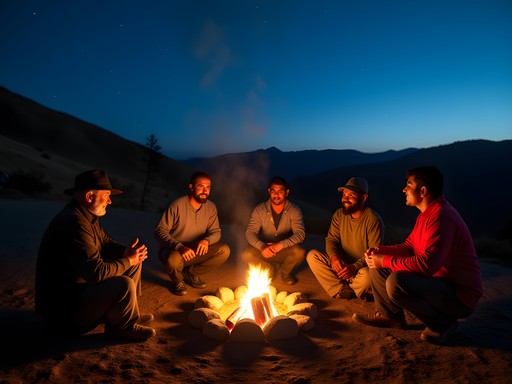


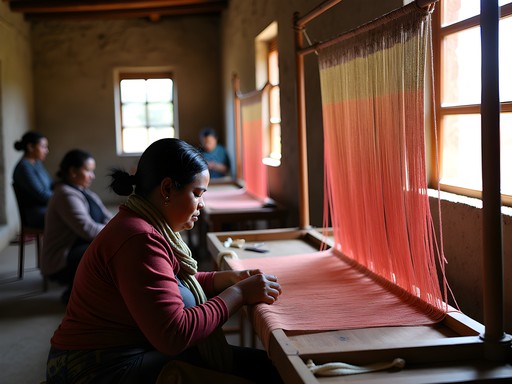






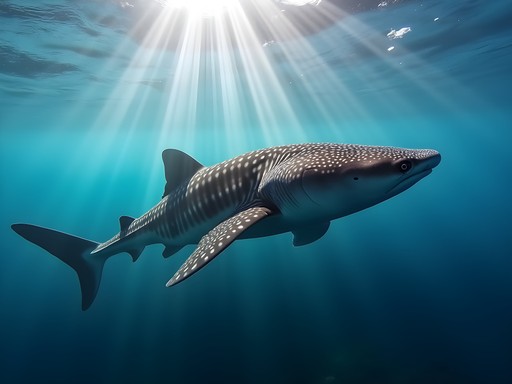
Comments
backpackvibes
This looks AMAZING! I'm planning a trip to southern Africa next year and wasn't considering Lesotho but now I'm totally adding it! How was the weather when you went? And did you feel safe the whole time? Also super curious about that part where you mentioned the traditional healing ceremony - can you share more about that experience?
Alex Lopez
You absolutely should include Lesotho! I went in early autumn (March) and the weather was perfect - warm days, cool nights. Felt completely safe the entire time, especially in the villages where hospitality is taken very seriously. The healing ceremony was unexpected - our guide's cousin was a traditional healer and invited us to observe (not participate). Lots of rhythmic dancing, herbal preparations, and spiritual elements. Very respectful experience but I didn't photograph it out of respect.
backpackvibes
That sounds incredible! Thanks so much for the details. Definitely adding this to my itinerary now!
luckyphotographer
That shot of the sunrise over the mountains with the silhouette of your horse is absolutely breathtaking! What camera setup were you using? The light capture is perfect.
Alex Lopez
Thanks! Just my trusty old Canon 5D Mark IV with a 24-70mm lens. The light in Lesotho does most of the work - those golden hours are magical up in the highlands!
MountainMan
That shot of the sunset over the mountains is absolutely stunning! What camera setup are you using?
Hunter Thompson
This brings back so many memories! I did a similar trek from Teyateyaneng two years ago, though only for a week. The Basotho mountain villages are like stepping back in time, aren't they? That moment when you're invited into someone's rondavel for a meal is pure magic. Did you get a chance to try the fermented sorghum beer? I found the first few days in the saddle absolutely brutal on my thighs though - wish I'd brought my padded shorts which would have been a lifesaver. Your section on 'Finding Rhythm in Highland Life' really captured that adjustment period perfectly. Great write-up, Alex!
luckyphotographer
Hunter - did you find it hard to communicate with the locals? I've heard English isn't widely spoken in the remote villages.
Hunter Thompson
It was a mix! In Teyateyaneng and larger villages, many people spoke some English. In the remote areas, my guide translated. I learned a few basic Sesotho phrases which the locals really appreciated - even just 'Dumela' (hello) and 'Kea leboha' (thank you) got me far!
winterone
Those mountain views are absolutely stunning! Bucket list material right here.
skytime
Wow Alex, your trek through Lesotho looks incredible! I visited Teyateyaneng last year but only for a day trip from Maseru. The Basotho people were so welcoming even in my brief encounter. How difficult was it to arrange the horseback journey? I'm thinking about returning next summer for something more immersive like what you did. Did you need any special riding experience beforehand?
Alex Lopez
Thanks for reading, skytime! The trek wasn't too difficult to arrange - I worked with a local guide in Teyateyaneng who set everything up. Basic riding experience helps, but they paired me with a gentle horse since I was pretty novice. Happy to send you my guide's contact info if you decide to go!
skytime
That would be amazing, thanks Alex! I'll definitely reach out when I start planning.
GlobalGypsy
Great post! How was the language barrier? Did you learn any Sesotho phrases before going?
HikingHannah
Not OP but when I visited Lesotho, I found that in tourist areas many people speak English. In remote villages though, knowing basics like greetings really helped! 'Lumela' (hello) and 'Kea leboha' (thank you) went a long way.
Timothy Jenkins
Alex, this brought back so many memories of my own journey through Lesotho in 2022! The way you described finding rhythm with your horse on those mountain passes resonated deeply. One thing I'd add for anyone planning this trek - the altitude takes a real toll if you're not acclimatized. I spent 3 days in Teyateyaneng before heading into the highlands and was thankful for it. The cultural immersion section was spot on. Those impromptu musical gatherings in the villages were highlights of my trip too. Did you get to try making mokorotlo (the traditional Basotho hats)? A village elder taught me, and while mine looked terrible, it's one of my most treasured travel memories. Beautiful writing that truly captures the soul of Lesotho. Looking forward to your next adventure!
trail_seeker42
Those mountain views are insane! Adding this to my bucket list right now.
escapequeen
This looks amazing! How did you handle the language barrier in the remote villages? And did you book with a specific tour company or arrange it independently?
Alex Lopez
Thanks for asking! I went with Lesotho Highland Treks - they provided a guide who spoke English and Sesotho. Most younger Basotho in towns speak some English, but in remote villages it was mostly gestures and smiles. The universal language of sharing food works wonders! I'd recommend booking at least the first few days with a company, then you can extend independently once you get comfortable.
Venture X
Premium card with 2X miles, $300 travel credit, Priority Pass